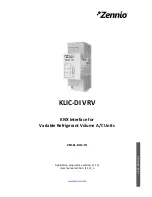
16 | SAMLEX AMERICA INC.
c)
Calculate the energy consumption in Watt-Hours (Wh) for each load using
Formula 5 based on the number of hours each load is expected to run during
the desired span of backup time. Add all to get the total energy in Watt
Hours (Wh).
d) Calculate the total battery energy consumption in Ampere Hours (Ah) for
the combined DC and AC loads using Formula 6.
Determining Actual Ah Capacity of Battery Bank – Actual Ah capacity of the battery
bank is determined based on the following considerations:
e)
As pointed out under heading “Reduction in Usable Capacity at Higher
Discharge Rates” on page 10, the Ah capacity of a battery is normally
specified at slower C/20 A i.e. 20 Hour discharge rate. However, in backup
applications, batteries get discharged at much higher discharge rates.
Normally, 3 Hour i.e. C/3 A Discharge Rate is considered for this application.
As per Table 3.2, the usable capacity at this higher discharge rate will be
reduced to 60%. The actual capacity of the battery will have to be increased
by 1.66 times.
f)
Further, for longer battery life, the battery should not be discharged deeply
(Please refer to heading “Depth of Discharge and Battery Life” on page 11).
Normally, depth of discharge should be limited to 80%. Hence, the actual
battery capacity will have to be increased to 1.25 times the backup energy
consumption to compensate for this limitation.
g) The actual battery capacity will, therefore, be equal to 1.66 x 1.25 = 2.07
times or say 2 times.
h) For example, if the total battery energy consumption as per the above
calculation at (d) is say 200 Ah, the capacity of the battery bank will be 2 x
200Ah = 400Ah.
Requirements of Battery Charging in Solar Systems
Batteries in Solar Systems are commonly subject to abusive conditions that are
generally due to:
• Under charging due to low sun peak hours
• Excessive charging in high sun peak hours
• Inappropriate or ineffective charge control for the battery technology
The individual or combined effects of sun peak hour changes, poor charge control and
the daily load changes can be potentially damaging to the battery. Cheaper charge
control strategies such as simple ON/OFF PV array shedding (Non PWM control) will
generally provide the battery with sufficient charging current to complete the Bulk
Charge Phase which will return the battery to 80% State of Charge. After the Bulk
Charge Phase, the Taper or Absorption Charge Phase is very important in preventing
stratification, hard sulfation and pre-mature capacity loss.
SECTION 3 |
Description & Principle of Operation
Summary of Contents for samlexpower SCC-30AB
Page 95: ...SAMLEX AMERICA INC 49 NOTES ...
















































